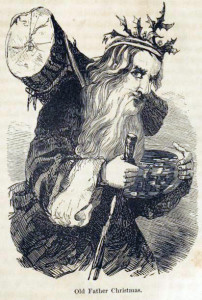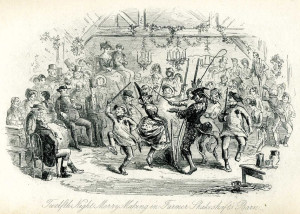And once again the solstice is upon us: winter solstice in the Northern Hemisphere, summer solstice in the Southern Hemisphere. We here in Lake Worth are in the Northern, where the nights have been growing longer and longer since our summer solstice in June. Each day a bit more daylight has been shaved off our allotment, and sent to the opposite hemisphere. The great mechanical balance of this, all its immensity: so beautiful, so constant. I am reassured always by this. No matter what is going on in our lives––all our triumphs and our hardships, too––no matter what we do to each other, or how we disrespect this planet we live upon, still it rocks back and forth, still this motion continues. This shifting of the Earth in its cosmic rocking chair is what creates our seasons. It goes on with or without us, as it has since it began and will until it ends.
Here in the North it is the start of winter by the almanac. By traditional reckoning of time, though, winter began with Halloween and with the Days of the Dead and we find ourselves now at the height of winter, it’s midpoint: This is old Midwinter. This is why, in so many churches and in so many homes this time of year, we sing a beautiful old song called “In the Bleak Midwinter.”
The moment of solstice, for those of you who like precision, is 5:44 AM on December 21 here in Lake Worth, which is Eastern Standard Time. The Eastern Time Zone is pretty large, though, and there are ways of determining the solstice moment––of “sun standing still”––with even greater precision should you wish it. In this house, we take a more roundabout approach. Plus 5:44 in the morning is an admittedly odd time of day to celebrate anything. So we will save our celebration for the night of the 21st, with a ceremony small and simple. We’ve been saving last year’s Christmas tree in a corner of the yard all year. It’s been there since we brought it out after Twelfth Night last year, after the Christmastide festivities came to a close. It’s been drying since then, as the days grew longer through spring and summer, and still as the days grew shorter again through fall and the start of winter. Every now and again throughout this past year, we would be blessed with a whiff of pine, a reminder of Christmas, as we passed by or worked near the old tree. That scent an instant portal to memory. On solstice night, we will use wood from that tree to fuel our midwinter fire. For us, it will be in the copper fire bowl outside in the back yard.
Perhaps you, too, have been following our ways and saving your old Christmas tree each year for this purpose. I like to sit there by the fire and imagine our sparks and woodsmoke rising into the air to meet yours, carrying all our wishes and blessings. But maybe you don’t have your old tree, or perhaps you live in a place where a fire is just not possible. Or maybe you simply don’t have it in you to build a fire. It’s okay. My suggestion always is to simply light a candle to mark the night and to take in its blessings. Light it for just a few minutes and then put it out, if you wish. And if you can’t do that, even if you illuminate a lightbulb somewhere and do it in a spirit of connexion with the mechanical clockwork of our immense planet, that, too, is a wonderful thing. Part of the Convivio approach is to not fret over things but to find ceremony where we can. This is what we mean by “the ceremony of a day,” and what better time to put that into practice than this, the shortest day, the longest, darkest night?
Image: “Earth at Night.” Released by NASA December 5, 2012, this photo was assembled from multiple shots taken by the Suomi NPP satellite during April and October 2012. [Public domain] via Wikimedia Commons.


